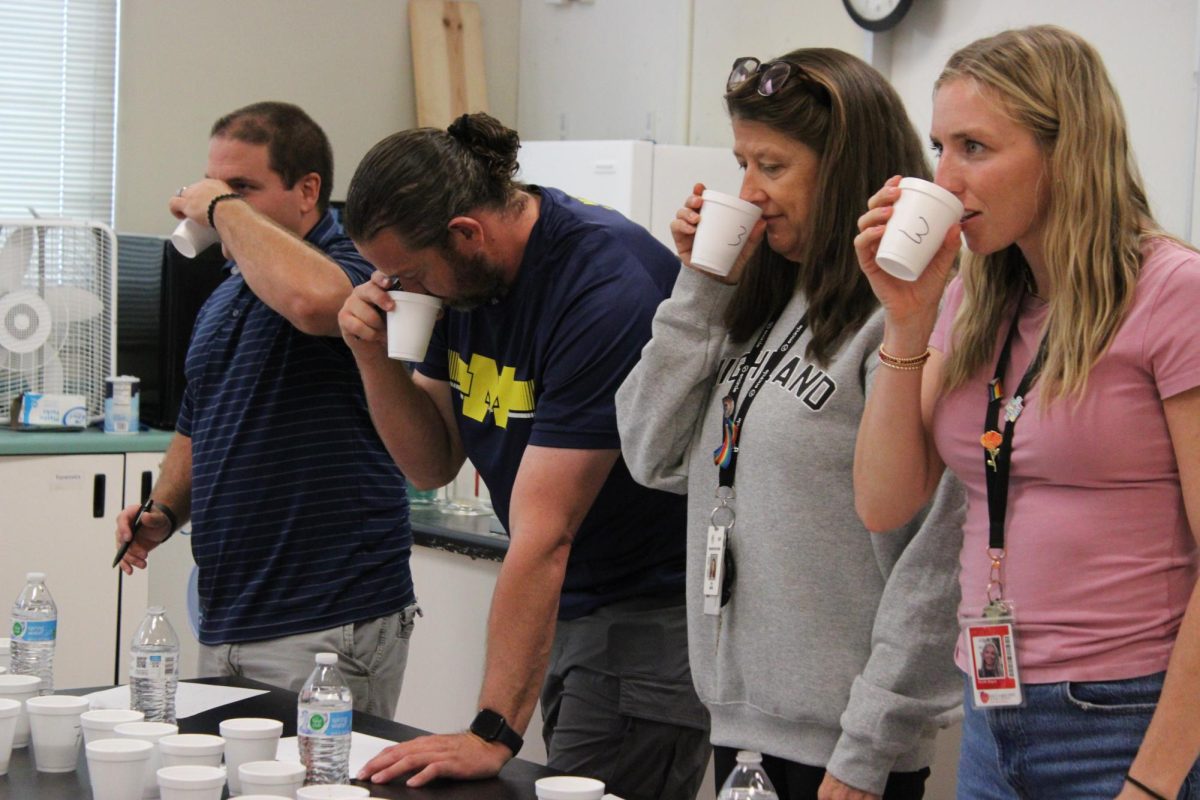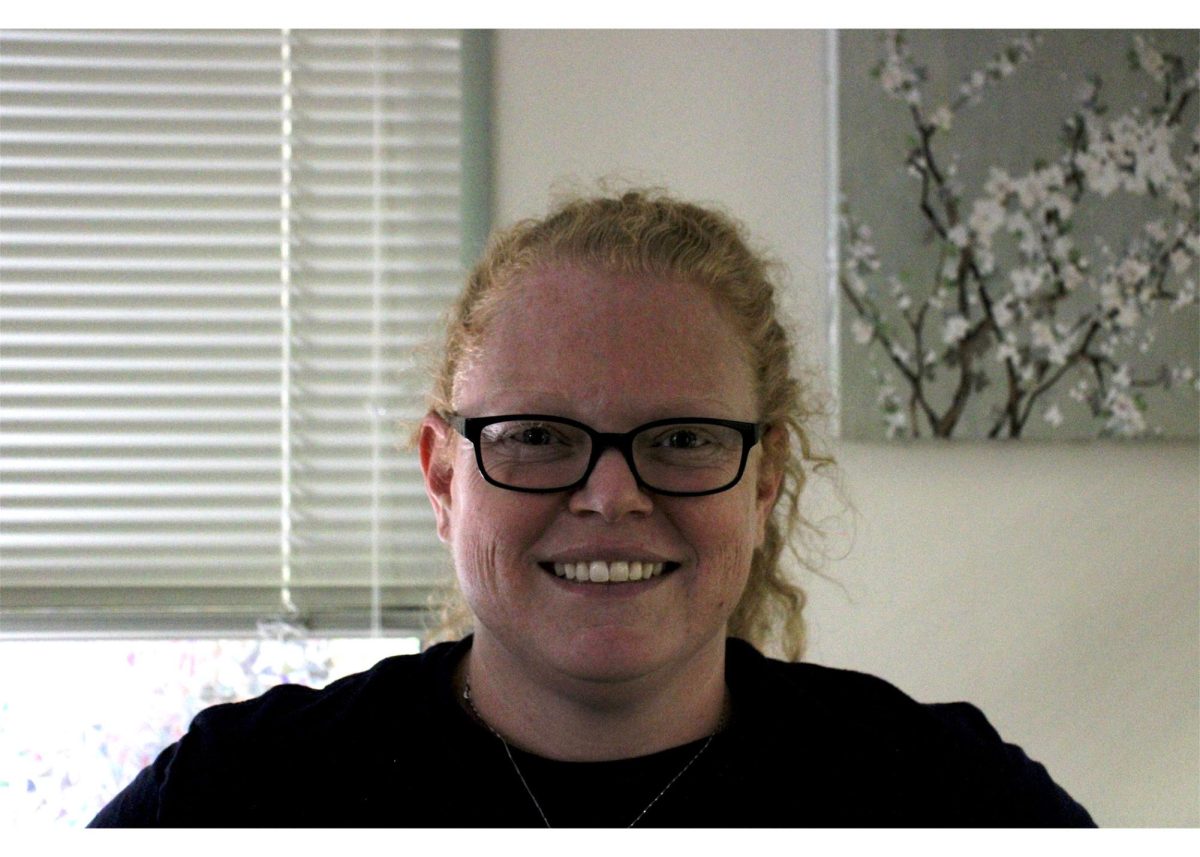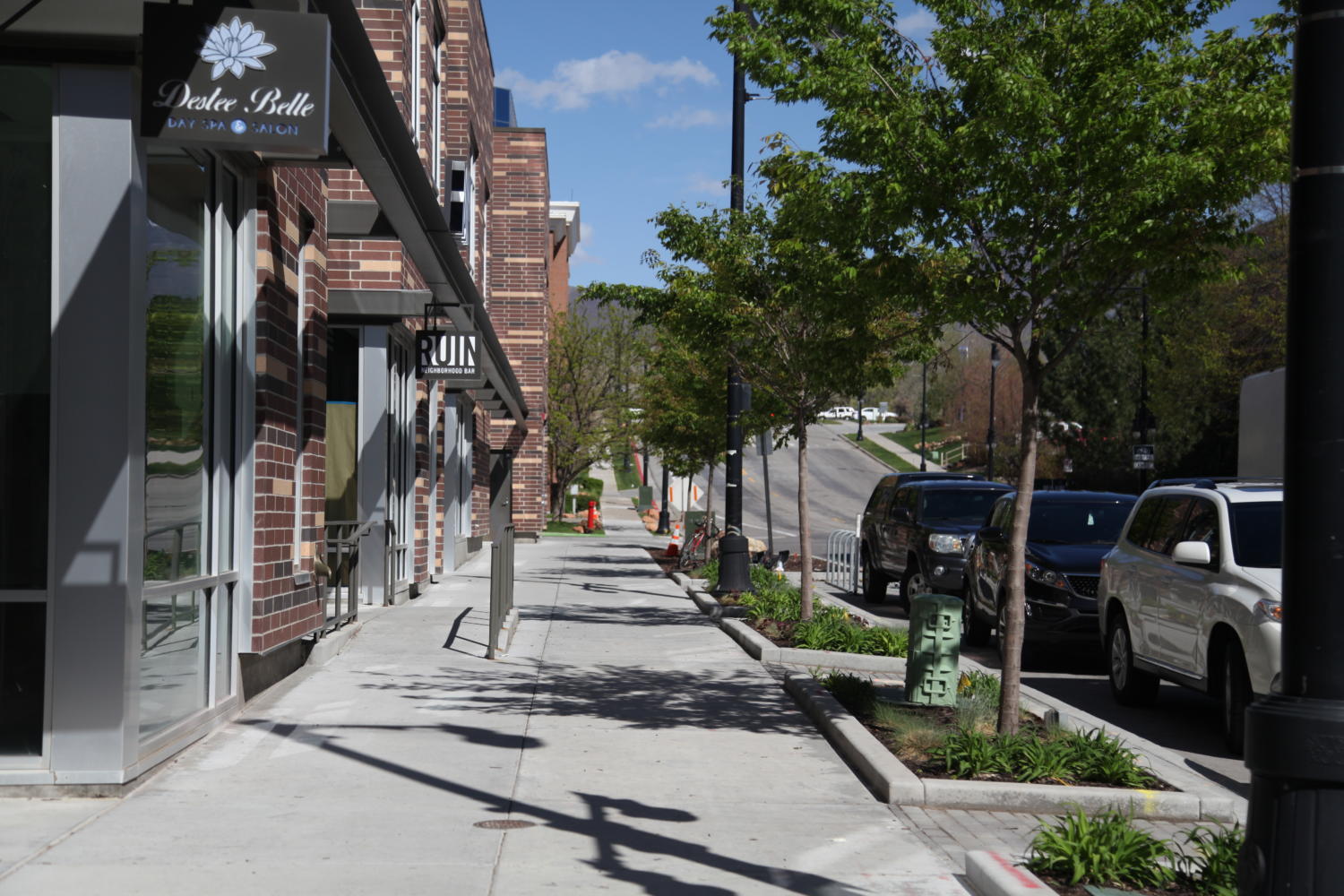Construction for the Rams
Sugarhouse has become much more crowded because of businesses and apartments.
May 12, 2017
The Wasatch Mountain Range spans over 160 miles across Utah, and cities encased in its majesty have been gaining more mountains. These mountains are made of glass, steel and brick, and are ever being amassed as construction rages on in the Sugar House area.
Projected populations for 2050 range from one million to two-and-a-half million new Utahns, according to the Utah Foundation, and as populous increases as does the need for development. This need for development creates increase of urban sprawl, defined as “the uncontrolled expansion of urban areas”. While urban areas are welcome, they begin to encroach upon the natural landscape.
As said in the Salt Lake Tribune, Utah specifically has the nation’s second-fastest rate of urban sprawl. Once urbanizing starts happening, more focus can be given to other issues surrounding it. The issue of consuming the environment begins to take care of itself, according to Andrew Pignanelli, a sophomore who is involved in the AP Environmental Science class, evolving past urban sprawl is the answer.
“Urbanizing is better for the environment than urban sprawl,” said Pignanelli.
Pignanelli views the explosion in development as the word itself: development. The construction that is taking place is what he views to be a step in the right direction, towards a more environmentally focused community.
Taller buildings opposed to more houses makes it so more development can happen while still maintaining the natural beauty of the Sugar House area. As apartment buildings begin to soar, more funding goes to nature walks in the neighborhood.
The creation of these buildings to accommodate projected needs has created much dispute, some claim public nuisance while others praise the influx of business. What needs to be considered though is that construction hasn’t been
solely focused on buildings, but also on preserving nature.
“The construction in Sugar House has done really well to maintain not only the development of the area but also the development of nature,” said Pignanelli. “We have parks and nature walk ways but also long width parking lots and apartment complexes.”
The only issue still omnipresent is that of the pollution that new construction causes. Pignanelli sees this as a problem, but he doesn’t believe that anything will be done to change it, at least not to the necessary extent.
This new structure of the community is certainly a big change, with immediate effects both visually and amongst the population. Issues still need to be addressed, like that of the influx of pollution, yet there is still an overwhelming sense of positivity. But only time will tell if this change is for the better, and so far the future isn’t looking too grim.





























